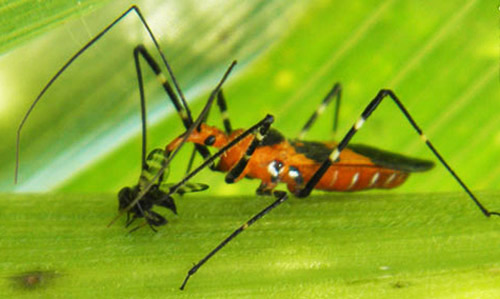
by Matthew Orwat | Apr 7, 2016
This spring, most garden plants are putting on lots of tender new growth. The lush foliage is like a free lunch to aphids, whiteflies, mealybugs and thrips. Before broad spectrum insecticides are used to control these pests, consider the impact on beneficial insects. Insecticides that don’t measurably harm predatory beneficial insects include insecticidal soaps and all season horticultural oils, which kill soft-bodied insect pests at application. Here are several common beneficial predatory and parasitic insects that help keep the pests at bay.
Assassin Bug Zelus longipes
Assassin bugs are predators of several leaf feeding and sap sucking insects including the fall army worm and the Asian citrus psyllid. They trap their prey by holding onto it with their forelegs and secreting enzymes into the prey to dissolve the interior tissue. Then they ingest the dissolved tissue.
Lady Bug or Lady Beetle
These insects most commonly feed on aphids, most insect eggs, whiteflies, small caterpillars, scale and mealybugs. They provide a measurable benefit to gardens since they are such generalized feeders. The Lady Beetle larva look substantially different from the adult stage.
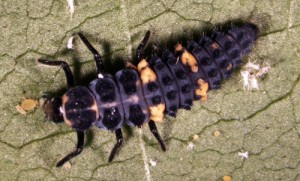
Third instar larvae of Hippodamia convergens. Photograph by Luis F. Aristizábal, University of Florida
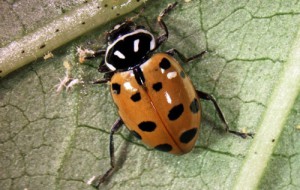
Newly emerged adult Hippodamia convergens showing typical body markings. Photograph by Luis F. Aristizábal, University of Florida.
Soldier Bug
A different but closely related species of the stink bug, this predator uses its piercing / sucking mouthparts to feed on larval beetles and caterpillars.
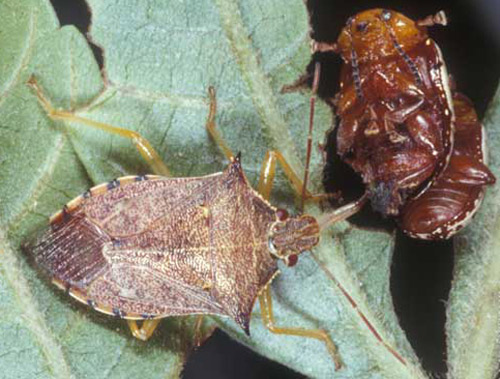
Dorsal view of an adult spined soldier bug, Podisus maculiventris (Say), feeding on a mating pair of sumac flea beetles, Blepharida rhois (Forster) (Coleoptera: Chrysomelidae). Photograph by Lyle J. Buss, University of Florida.
Lacewings
The green and brown lacewing is often found around aphid infestations. The larva is the major predator, they make the biggest dent on aphid populations. In addition to aphids, lacewings also feed on scale, mealybugs and several species of insect eggs.
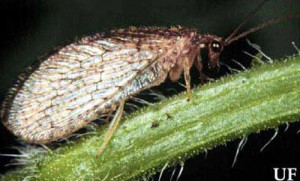
Adult brown lacewing (Neuroptera: Hemerobiidae). Photograph by University of Florida.
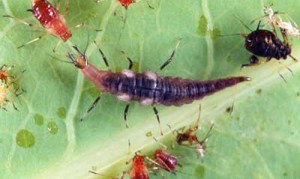
Larva of a brown lacewing (Neuroptera: Hemerobiidae) preparing to attack and feed on an aphid. The black-colored aphid to the right was probably parasitized by a wasp. Photograph by Lyle J. Buss, University of Florida.
Predatory Gall Midges
This aphid predator is easily overlooked because it is so small, and resembles the flower fly. They also feed on scale, thrips and mites.
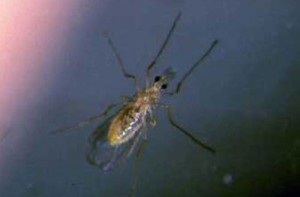
Adult of the predatory gall-midge, Feltiella acarisuga (Vallot). Photograph by David R. Gillespie, Agassiz.
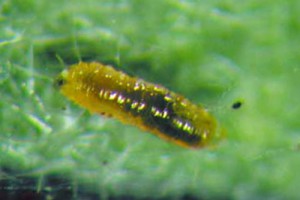
Larva of the predatory gall-midge, Feltiella acarisuga (Vallot). Photograph by Lance S. Osborne, University of Florida.
Flower Flies (Hover Flies)
Flower Flies actually resemble honeybees or bumblebees. People often run from them! The adult is an important pollinator for many crop species and feeds on nectar and aphid honeydew. This time it’s the larva which is predatory and is a voracious feeder of aphids. Large concentrations of larvae substantially reduce aphid populations in aphid infested gardens and fields.
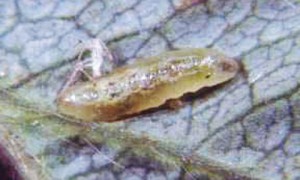
Larva of Allograpta obliqua (Say), a hover fly. Photograph by James F. Price, University of Florida.
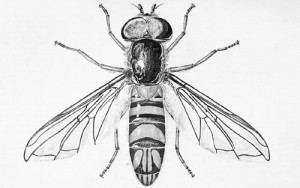
An adult male hover fly, Allograpta obliqua (Say). Graphic by Division of Plant Industry.
Parasitic Flies
There are many types of parasitic flies which parasitize a variety of insect pest species. They may inject their eggs into the host, or lay the egg on the surface of their host. Usually they are very small and not noticeable.
Parasitic Wasps
Most parasitic wasp species are tiny, fast and hard to notice. The average gardener is not aware of their rather plentiful existence. They are a common killer of grubs, caterpillars, whiteflies and aphids. They either insert their eggs into the organism or lay eggs on the surface of their host.
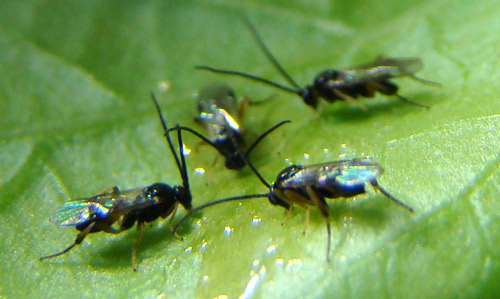
A group of adult Cotesia congregata (Say) wasps feeding on honey solution placed on the underside of a tomato leaf. Photograph by Justin Bredlau, Virginia Commonwealth University.
Big Eyed Bugs and Minute Pirate Bugs
While big eyed bugs and minute pirate bugs are not related, they perform similar functions in gardens and agricultural systems by feeding on chinch bug nymphs, psocids, leafhoppers, aphids, thrips, and mites. They are found in variety of ecosystems and do their job anonymously.
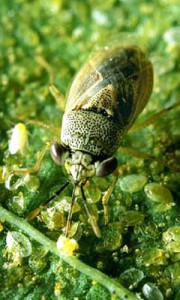
Adult bigeyed bug, Geocoris sp., feeding on a whitefly nymph. Photograph by Jack Dykinga, USDA
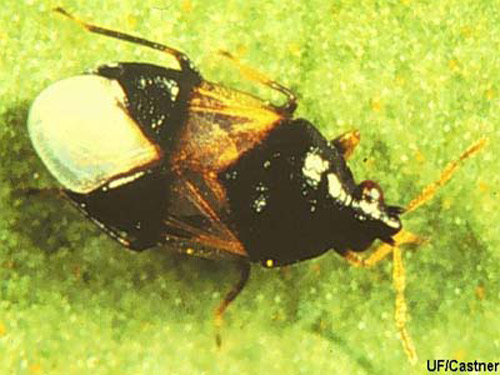
The minute pirate bugs are black with white markings. They prey on many small insects and eggs, including thrips. About 70 species exist in North America. Photograph by James Castner, University of Florida
References:
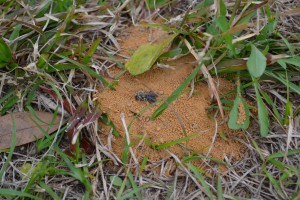
by Beth Bolles | Mar 28, 2016
The mining bees or adrenids are often seen in areas of landscapes that have little ground vegetation and loose soil. After mating, the female bee will excavate a very small tunnel in the ground that has several small cells attached to it.
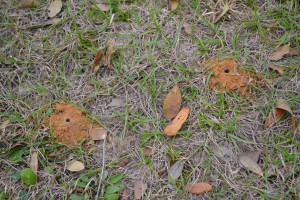
Beneficial solitary bee mounds in the ground. Photo by Beth Bolles
The bee collects pollen and nectar to add to the cell and then lays a single egg in each cell. The emerging larvae feed on the nectar and pollen until it changes to an adult bee in the fall. There is only one generation a year. Although these solitary bees individually produce small nests, sometimes many will nest in close proximity to each other.
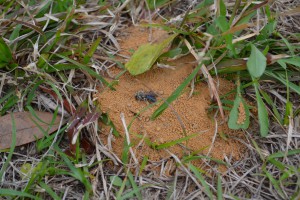
Solitary bee entering ground. Photo by Beth Bolles
Solitary bees are not aggressive and stings are quite mild. Most solitary bees can be closely observed and will elicit no defensive behaviors. Perhaps the most common stings that occur are when the sweat bee, which is attracted to moisture, stings when swatted. Males of some solitary bees, which can not sting, will sometimes make aggressive-looking bluffing flights when defending a territory.
Like the most famous honey bee, solitary bees play a beneficial role in the pollination of plants. Their activity in the spring is short-lived and no management is necessary.
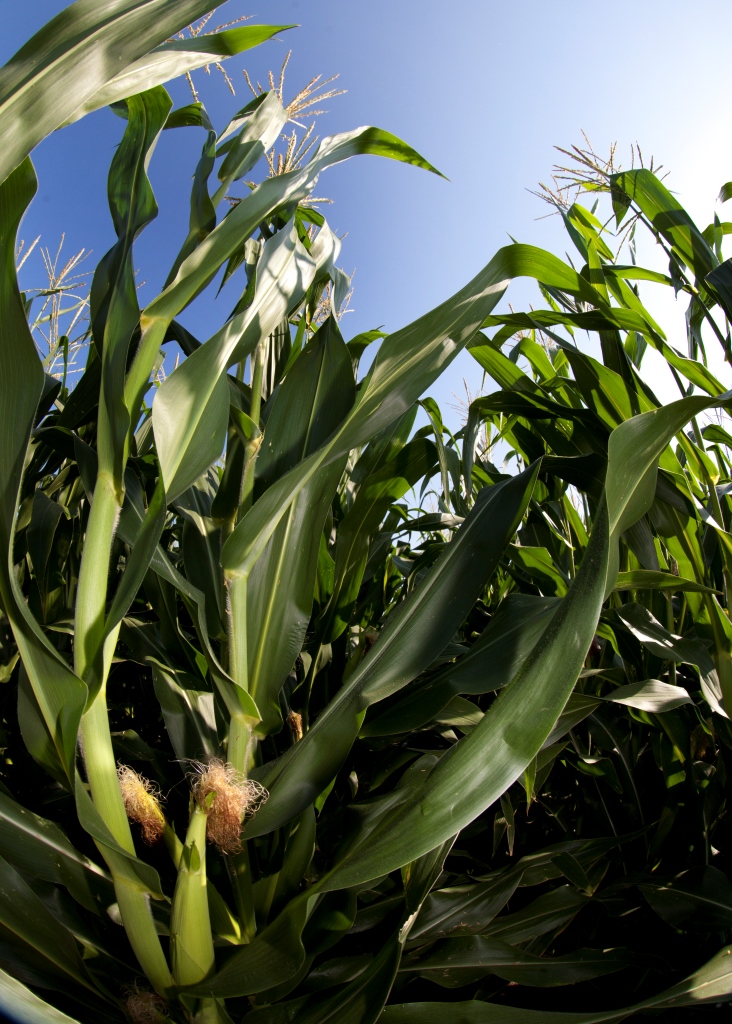
by Judy Biss | Feb 3, 2016

Corn tassels at the top provide the pollen needed to produce the perfect ear of corn on the stalk below. UF/IFAS Photo by Tyler Jones.
It won’t be long until row crops and vegetable gardens are planted and thriving once again next spring. A sometimes taken for granted, yet critical element of any prosperous crop is successful pollination. Most of us know what “text book” pollination means, but did you know in cucurbit plants, (squash, melon, pumpkin) at least 1,000 grains of pollen must be evenly deposited in each bloom to produce a uniform marketable fruit? Or, to grow our favorite summer delight, each watermelon flower must be visited by a honeybee a minimum of 8 times? And how about the fact that each silk in a corn flower is connected to one kernel on the ear of corn, and for the kernel to develop properly pollen must travel down the silk through a pollen tube to the waiting kernel? Add to these facts the dizzying variety of pollen and flowers, bloom times, pollination dynamics, weather conditions, plant growth, and availability of pollinator insects, then one can begin to see how amazing pollination is, and how critical it is to our food supply.
What are the basics of pollination?
The first step of fruit or vegetable reproduction takes place when flowers emerge. Plant flowers can be male, female, or perfect flowers. The male flowers produce pollen. The female flowers have ovaries which, when fertilized, become the fruit or vegetable. “Perfect” flowers have both male and female parts within a single flower. Most garden vegetables such as beans, peppers, and tomatoes have perfect flowers, whereas cucurbits like squash, pumpkins and watermelon, have separate male and female flowers on the same vine. For successful pollination to occur, the male pollen must reach the female ovaries in order for the fruit or vegetable to be produced.
Methods of Pollinating
Transfer of pollen to the plant ovaries for fruit and vegetable production, whether in the same “perfect” flower, or in another separate female flower, occurs in several ways. Some plants, like corn, depend on wind to transfer pollen to the silk, and ultimately ovaries, of the female flower. Other plants, like squash depend on the help of pollinators like insects to deliver the pollen to the ovaries. Plants that produce perfect flowers can self-pollinate, but still benefit from contact with pollinators. In small backyard gardens, many crops in the cucurbit family (squash, melons, etc.) or those that have separate male and female flowers, can be pollinated by the gardener by hand. In the absence of insect pollinators in dooryard gardens, hand pollination will increase yields.
The Importance of Bees
Obviously, in production agriculture, hand pollination of crops is not feasible, and although some crops are wind pollinated, most crops need insect or animal pollinators to accomplish the job. As we know, bees are one of the most important pollinating insects, and it is well documented that yields of many fruit and vegetable crops increase in both quality and quantity when pollinated by honey bees. According to the UF/IFAS publication Minimizing Honey Bee Exposure to Pesticides:
The Business of Pollination
Because they are so critical to increased quality and quantity yields, managed honey bee colonies are used across the country in a thriving contractual pollination industry. According to the UF/IFAS publication Sample Pollination agreement,
The business of pollination is crucial to the agricultural industry in the United States. In Florida, the major need for pollination is in fruit and vegetable production.
And according to the UF/IFAS publication Minimizing Honey Bee Exposure to Pesticides,
Rental of honey bee colonies for pollination purposes is a highly demanded service and a viable component of commercial beekeeping and agriculture. Bee colonies are moved extensively across the country for use in multiple crops every year. There are also over 3,000 registered beekeepers in Florida, managing a total of more than 400,000 honey bee colonies and producing between 10–20 million pounds of honey annually.
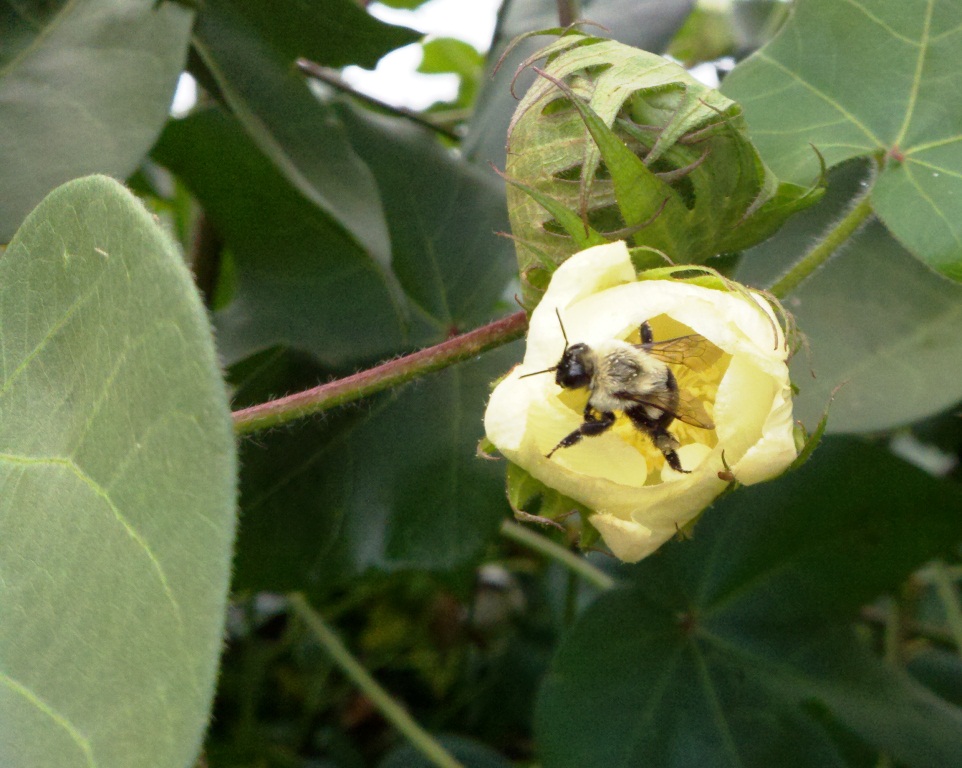
Cotton is largely self-pollinating, but attractive to bees. In some cotton varieties, pollination by bees can increase seed set per boll. Source: University of Georgia Pollination: Crop Pollination Requirements. Photo by Judy Biss
Crop Pollination Requirements
The dynamic of pollination is a fascinating and critical component of both dooryard and production agriculture. Research on plant health, varieties, growth, and potential, as well as research on honey bee colony health and management, all play a role in producing sustainable food yields. The University of Georgia has summarized pertinent literature related to common fruit and vegetable crop pollination requirements (Apple, Blueberry, Cantaloupe, Cucumber, Squash, Watermelon, Other Crops). This comprehensive resource provides the recommended number of beehives per acre for each crop, plus additional information on plant variety characteristics, and other useful information related to maximizing pollination and yield. Check it out: Pollination: Crop Pollination Requirements
So whether you have a dooryard garden or a large farm, it will benefit you to learn all there is to know about your crop’s pollination requirements to maximize yield and quality potential.
For more information on this topic, please see the following publications used as resources for this article:

by Mary Salinas | Sep 24, 2015
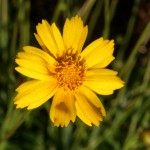
Native Lanceleaf Coreopsis. UF/IFAS Photo: Thomas Wright.
In our demonstration garden we are enjoying the small but vibrant blooms of our state wildflower Coreopsis, also commonly known as tickseed. After many years of its use in the Florida highways beautification program, Coreopsis was adopted as Florida’s official state wildflower in 1991.
Florida can boast of 16 different species of Coreopsis that occur in the state with most blooming in the spring but some species blooming in the summer to later in the fall. Some of those species are rare, endangered or only found in very limited areas of the state, while others are quite common throughout the state.
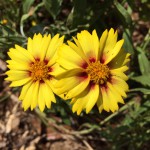
Photo credit: Mary Derrick, UF/IFAS.
Many lovely new cultivars have been introduced for our enjoyment by plant breeders through cross-breeding and selection. Some you can see in the accompanying photographs in this article.
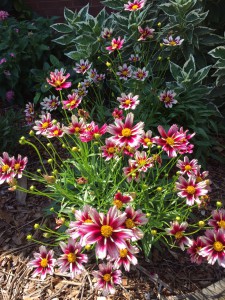
Photo credit: Mary Derrick, UF/IFAS.
Coreopsis is an annual or short-lived perennial that makes a great addition to your garden beds. And the bees and butterflies will enjoy them! The numerous flowers readily produce seed for naturalizing in the landscape. Plant them in a sunny spot in the landscape in evenly watered but well-drained soil. Removing the dead blooms will encourage plants to prolong their blooming; you can also save the seed for replanting in new areas of your landscape.
For more information:
History of Coreopsis as Florida State Wildflower
Gardening Solutions: Coreopsis
Florida Wildflower Foundation
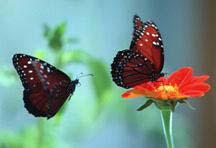
by Mary Salinas | Jul 7, 2015
Butterflies are not only beautiful to look at in your landscape; they serve as important pollinators and indicators of the health of our environment. Attracting them to your garden and incorporating some features to get them to stay and make it their home involves a little planning ahead of time for optimum results.

Queen butterfly. Photo credit: Milt Putnam, UF/IFAS.
Choose a location that provides some protection from wind. Trees and shrubs that provide wind protection also serve as a safe harbor from rain and predators. The garden should be mostly sunny with some part sun areas. Ensure that any new plantings have access to a convenient irrigation source so they can be successfully established and maintained in good health.
Now you’ll need to choose the plants. Adults feed on the nectar of many flowering trees, shrubs, perennials, and annuals and, fortunately, there are usually many choices that will meet your site requirements and your taste preferences. In order to keep the butterflies in your garden, certain plants need to be available to serve as host plants for their young. Determine which species of butterfly is common in your area and that you want to attract. Most species have very few plants on which the caterpillars can feed so those host plants need to be chosen wisely. Determine whether any of the plants you already have are host plants and they can be integrated into your butterfly garden. For example, cassia is a host plant for the Cloudless Sulphur and citrus is a host plant for the Giant Swallowtail.
In choosing your nectar plants, select those that are native or Florida-Friendly as they are lower maintenance, giving you less trouble in the long run. Choose plants that have flowers in a variety of color, size, and shape. Different butterflies like to feed at different elevations, so choose trees, shrubs, perennials, and annuals of varying heights. In order to have nectar available throughout the time when the butterflies occur, include plants that bloom at different times of the year. And include some plants that bloom from spring to late fall, like pentas or moss verbena.
Larger plants should be placed in the background with smaller plants layered in the foreground. When you plant smaller annuals and perennials, place them in masses to better attract the butterflies. Consider placing host plants in an area that is in close proximity to the nectar plants, but in an area of your garden that is not a focal point. Host plants can get quite ragged looking from hungry caterpillars!
Good maintenance practices will enhance the health of your garden. Regular fertilization and irrigation if needed will help keep your plants in bloom and healthy; healthy plants are less susceptible to disease and pests. Avoid pesticides as they may harm the very creatures you are trying to attract. Never use Bt or systemic pesticide. If you must, target a pest with lower risk oils or soaps and then only treat the affected plants. Lastly, be aware of beneficial insects that will help you achieve satisfactory control of a pest.
Now that your plants are placed there are several things to do to make your butterfly garden complete. Add a spot where water can puddle on the ground for the adult butterflies to drink. They require minerals from the soil that get dissolved in the water. Also add a rock or log in a sunny spot where butterflies can rest and sun themselves. And consider placing a comfortable place for you to sit and enjoy the beauty of your garden and its inhabitants!
For more information:
Butterfly Gardening in Florida
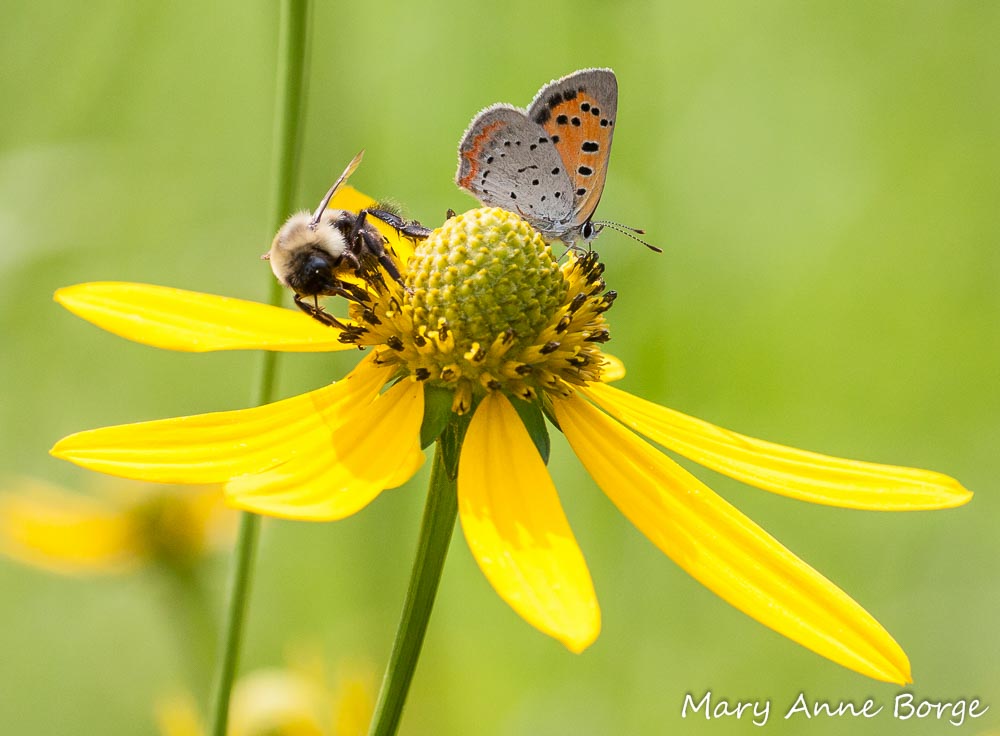
by Sheila Dunning | May 22, 2015
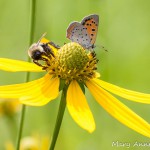 Everyone with a landscape can make a difference for pollinators. Simply Having Areas Reserved for the Environment enables homeowners, land managers, farmers, individuals, corporations, schools, roadside managers, and golf courses to increase the number of pollinators in the area by making conscious choices to include plants that provide essential habitat for bees, bats, birds, butterflies, moths, beetles, and hummingbirds. What better time than during National Pollinator Week, June 15-21, 2015.
Everyone with a landscape can make a difference for pollinators. Simply Having Areas Reserved for the Environment enables homeowners, land managers, farmers, individuals, corporations, schools, roadside managers, and golf courses to increase the number of pollinators in the area by making conscious choices to include plants that provide essential habitat for bees, bats, birds, butterflies, moths, beetles, and hummingbirds. What better time than during National Pollinator Week, June 15-21, 2015.
Initiated and managed by the North American Pollinator Protection Campaign, National Pollinator Week was unanimously approved and designated by the U.S. Senate in 2007. Each year since, the U.S. Secretary of Agriculture has signed the proclamation in an effort to address the urgent issue of declining pollinator populations.
Worldwide there is evidence that pollinating animals have suffered from loss of habitat, pesticide misuse, competition from invasive species, disease, and parasites. Many pollinators are federally “listed species”, meaning that there is documented information confirming the disappearance and/or significant population reduction in natural areas. The United States has lost over 50% of its managed honeybee colonies over the past ten years. The European Union has been so concerned that they invested over $20 million investigating the status of pollinators in Europe.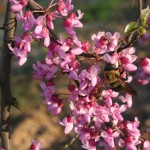
Pollinator health affects everyone. Worldwide, roughly 1,000 plants grown for food, beverages, fibers, spices, and medicines need to be pollinated by animals in order to produce the goods on which we depend. Food and beverages produced with the help of pollinators include: apples, blueberries, chocolate, coffee, melons, peaches, potatoes, pumpkins, vanilla, almonds, and tequila. In the U.S., pollination by honey bees, native bees, and other insects produces $40 billion worth of products annually.
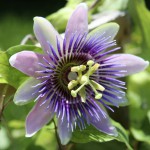 The native plants that can be identified and preserved or introduced include trees, shrubs, vines and perennials. Some of them include: Eastern Redbud (Cercis canadensis), Highbush Blueberry (Vaccinium spp.), Passionflower (Passiflora spp.), Coreopsis (Coreopsis spp.), Goldenrod (Solidago spp.), Black-eyed Susan (Rudbeckia hirta), and Butterfly Milkweed (Asclepias tuberosa). Simply identifying and avoiding damaging many of the existing native plants will allow anyone to provide important homes and food for many different pollinating animals. During National Pollinator Week S.H.A.R.E. your space.
The native plants that can be identified and preserved or introduced include trees, shrubs, vines and perennials. Some of them include: Eastern Redbud (Cercis canadensis), Highbush Blueberry (Vaccinium spp.), Passionflower (Passiflora spp.), Coreopsis (Coreopsis spp.), Goldenrod (Solidago spp.), Black-eyed Susan (Rudbeckia hirta), and Butterfly Milkweed (Asclepias tuberosa). Simply identifying and avoiding damaging many of the existing native plants will allow anyone to provide important homes and food for many different pollinating animals. During National Pollinator Week S.H.A.R.E. your space.
For additional information:
UF Native Buzz
Gardening for Pollinators
Minimizing Honey Bee Exposure to Pesticides
The Xerces Society




























